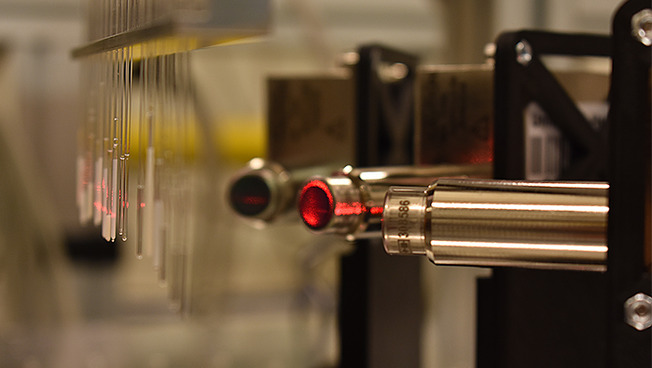5 October 2022
Promising methods of measurement should provide data and insights for combating chronic illnesses and cancer.Universität Hamburg team measures the uptake of co-enzymes by individual cells

Photo: XX
The high resolution offered by the x-ray fluorescence method makes it possible to measure the distribution of molecules, such as co-enzymes, inside individual cells. To do this however, the molecule must be marked, but marked in such a way that does not alter its behavior.
For the study, released in the “Antioxidants” journal, the team around experimental physicist Prof. Dr. Florian Grüner examined Q10 molecules that had been marked with iodine atoms which would fluoresce after being exposed to x-rays (x-ray echo). This enabled the team to do more than just confirm enzyme uptake into the cells.
“We were also able to measure the spatial distribution of Q10 within the individual cells, and examine how uptake differed from cell to cell. It is interesting that every cell seems to have taken up Q10 depending on their individual size,” explains first author and project leader Dr. Theresa Staufer who shares the group head role with Prof. Grüner. Dr. Mirja von Bodegraven, co-author and project leader for the Beiersdorf corporation adds: “It was only working in this exceptional interdisciplinary cooperation that we were able, from a technical perspective, to make the uptake of co-enzyme Q10 in every skin cell visible.”
Prof. Grüner’s group has been focusing on the development of x-ray fluorescence imaging, and how it can be better ued as a tool for investigating the effect of molecular active substances in biological tissue samples.
The results of this development are reflected in a range of publications, as well as patents. In a next step, research will be expanded to preclinical trials, i.e., the development of new medications. In collaboration with other groups from the Department of Physics at Universität Hamburg, as well as researchers from the University Medical Center Hamburg-Eppendorf (UKE), Grüner’s group is planning to study marked immune cells from chronic illnesses such as Crohn’s disease.
Another project is concentrating on anti-cancer agents, investigating whether they are reaching the tumor in sufficient quantities and whether these actually manage to penetrate the tumor. This research has recently been granted funding by the Federal Ministry of Education and Research. There are also plans to apply the findings from this research to studies of liver inflammation and kidney diseases. An additional project plans to track mRNA nanoparticles, a highly topical issue since the development of mRNA vaccines.
“This research has enormous potential, and can provide significant value particularly for the close cooperation between the Department of Physics at Universität Hamburg with UKE. Just as important however is the collaboration in Hamburg as a home to top research, because of our unique research infrastructure, like that operated by DESY.” explains Prof. Florian Grüner.
In this study for example, the collaboration partners were decisive to the results: the Hamburg research area CAN at the Fraunhofer IAP marked the Q10 molecules, and the x-ray fluorescence was measured by a team using the DESY Synchrotron (PETRA III), which produces one of the brightest x-ray beans in the world. The skin cells and biological tests with the marked Q10 in comparison to the non-marked was performed by the Beiersdorf corporation, which had contracted the research. “At such a unique research hub it is possible to apply very promising findings from basic research through technology transfer with industry.” continued Grüner.
You can find an interview with Florian Grüner and Theresa Staufer in Universität Hamburg’s Newsroom.
